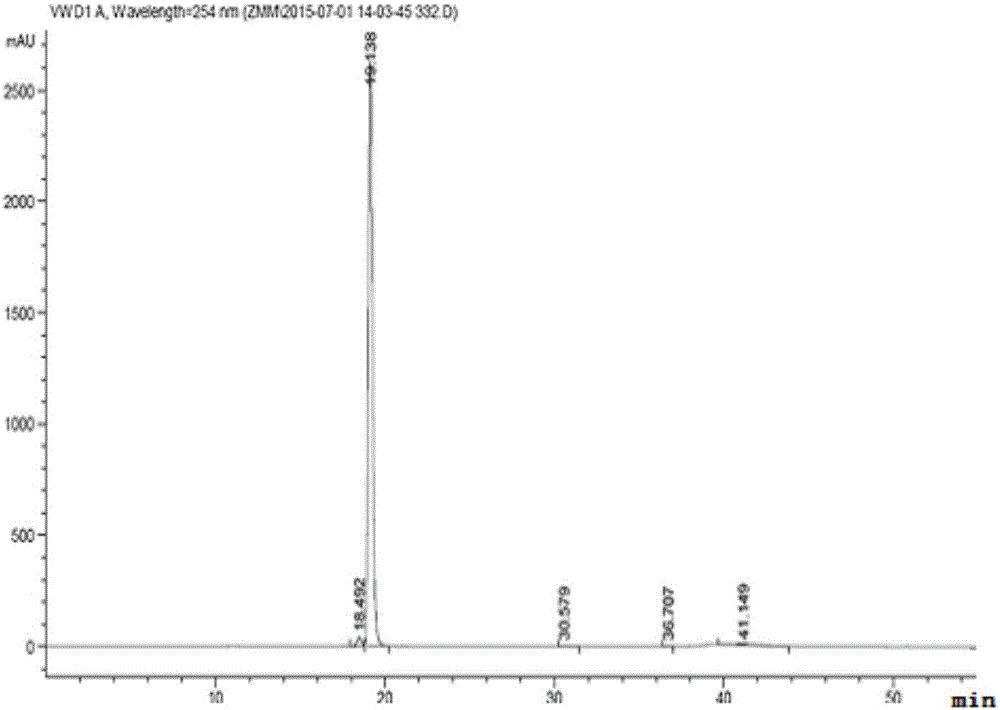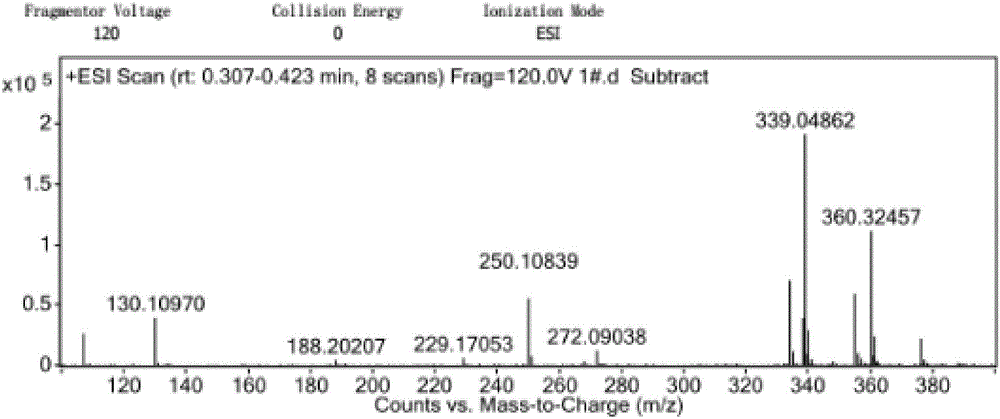Bis(p-benzoquinone) compound and extraction method thereof
A technology of p-benzoquinone and compounds, applied in the field of natural products, can solve problems such as the unclear relationship between bamboo and yellow, and achieve the effect of easy industrial production
- Summary
- Abstract
- Description
- Claims
- Application Information
AI Technical Summary
Problems solved by technology
Method used
Image
Examples
Embodiment 1
[0026] Embodiment 1: the isolation of the red pigment-producing fungal strain in bamboo yellow fruiting body
[0027] Collect natural and fresh bamboo yellow fruiting bodies, soak in 1% sodium hypochlorite for 2 minutes in the laboratory immediately, rinse 5 times with sterile water, cut into 1cm small pieces with a sterilized scalpel, and place them on the PDA solid medium . Cultivate at 28°C for 7 days, inoculate the mycelia grown from the small pieces on the PDA slant, and store the isolated strains numbered.
[0028] Add sterile water to wash the spores of the slant strains that have been cultured for more than 7 days, spread them on a PDA plate after dilution, culture at 28°C, observe every day, and select colonies that produce red pigment for further testing.
Embodiment 2
[0029] Embodiment 2: the detection of solid fermentation and product of producing red pigment strain
[0030] Each bacterial strain that example 1 obtains is inoculated on the PDA plate, after 6d, take the 1cm on the plate 2 Inoculate the bacterial block together with the medium into a 250mL Erlenmeyer flask containing 100mL potato dextrose liquid medium, and shake the flask at 28°C and 130rpm / min for 4-5d as a seed culture solution.
[0031] Soak the rice in water for 24 hours at room temperature, add 30% soybean powder, adjust the pH to 6.8 with 1mol / L NaOH, and sterilize at 121°C. The seed culture solution was inoculated into the rice culture medium cooled to room temperature, cultured at 28°C, and the fermented product was harvested after 14 days, dried in an oven at 50°C and pulverized.
[0032] Ethyl acetate was added to the pulverized fermented product to soak, and after 24 hours, it was filtered, and then concentrated under reduced pressure at 55° C. to recover the so...
Embodiment 3
[0033] Embodiment 3: the separation of new bis-p-benzoquinones
[0034] Take the following steps:
[0035]Ferment the strain detected to contain the target compound in solid state according to the method of Example 2, put 200 grams of the solid fermented product in a 50°C oven, dry and pulverize, add ethyl acetate for leaching 3 times, each leaching for 24h; suction filtration Afterwards, the solvent was concentrated under reduced pressure at 55° C. to obtain 28 g of crude extract. The obtained crude material was dissolved in petroleum ether, and it was preliminarily divided into a petroleum ether-soluble fraction (18 g) and a petroleum ether-insoluble fraction (10 g). The part 10g insoluble in petroleum ether was further separated by vacuum silica gel column chromatography, and the sample was loaded by dry method. Esters = 100:1, followed by 30:1, 25:1...1:1, recover the eluent, and combine similar components according to the results of polyamide film spotting, the developi...
PUM
 Login to View More
Login to View More Abstract
Description
Claims
Application Information
 Login to View More
Login to View More - R&D Engineer
- R&D Manager
- IP Professional
- Industry Leading Data Capabilities
- Powerful AI technology
- Patent DNA Extraction
Browse by: Latest US Patents, China's latest patents, Technical Efficacy Thesaurus, Application Domain, Technology Topic, Popular Technical Reports.
© 2024 PatSnap. All rights reserved.Legal|Privacy policy|Modern Slavery Act Transparency Statement|Sitemap|About US| Contact US: help@patsnap.com










